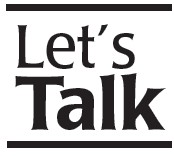Watching pornography is a personal choice. However, the effect of pornography is a cultural problem that ripples as far as the eye can see. Pornography affects all of us whether we watch it or not; make it or not; like it or not; porn doesn’t discriminate.
Pornography is embedded in our culture and into our subconscious. It portrays sexual acts that encourage users to use sex solely for the purposes of self-gratification. Due to the increased availability, affordability and anonymity of pornography, we live in a world in which sexualized violence is so common it is actually considered normal. The violent acts in pornography are now considered the expression of sexual norms, not a violation of the norms.
A study done in 2010 by Robert Jenson, a Texas A&M professor, revealed: 12 years old or 6th grade is the average age in the U.S. when boys seek exposure to pornography. Part of our children’s progression into adulthood is selfrealization. Children become self-aware and start seeking peer approval, coincidentally, around age 12. They take social cues on how to dress, speak, act and so on.
According to “Stop It Now,” a national organization fighting child sexual abuse, 13 to 16 is the age teens first start experimenting with sex. When children are introduced to sex through pornography the perception of what sex actually is and means is not reflected. Yet, pornography continues to be the primary source of adolescent sex education.
Dr. Jenson believes the porn industry is teaching our children: 1. All women at all times want to have sex with all men. 2. When a woman doesn’t realize she wants to have sex with a man, using a little force will change her mind. 3. All women like all sex acts demanded of them.
Ninety-four percent of pornographic films display some type of physical violence towards women. This multi-billion-dollara year industry has over 420 million pornographic web pages on the Internet dedicated to distributing and viewing this material. Porn is also hiding in plain sight, such as in commercials, magazines, Facebook ads, webpage ads, YouTube and Vine videos, music videos, music lyrics, sitcoms, our email folders and so much more.
We know our children are watching porn, we know it because we did/ do it. Commercialized sex is far too rampant to successfully shield our children and ignoring sex is not the answer either. It is time to give our kids a perspective on porn.
Start talking to children early and often about sex. In addition to discussing dangers and concerns about sex, discuss the intentions of sex. Sex is not an act; it is a private, important and thoughtful choice.
Remember that sexual expression in children is completely normal. Parents may choose to wait for indicators their child is ready to talk about sex or choose to bite the bullet and bring up the topic. You can start the conversation by saing, “I don’t want you to think I am accusing you of bad behavior; I just want you to be prepared when you come across this….” What children need from you when talking about the difference between sex and pornography is your full attention, to express their feelings, to be asked their opinion, to hear about your own experiences and to not be made fun of or judged.
Don’t try to cover all of the information in one session. This is a topic that should be approached from time to time in a thoughtful way. The more you talk with your kids about sexual messages and social media the more comfortable they will feel speaking to you about other issues in their lives. For more information on how to talk to your kids about sex and pornography, visit www.womenfordecency.org.
Each month a local mental health therapist will discuss an area of mental health. This month’s contributor is the Violence Prevention Center. If you need to talk to someone confidentially, call 218- 387-1262.



Leave a Reply